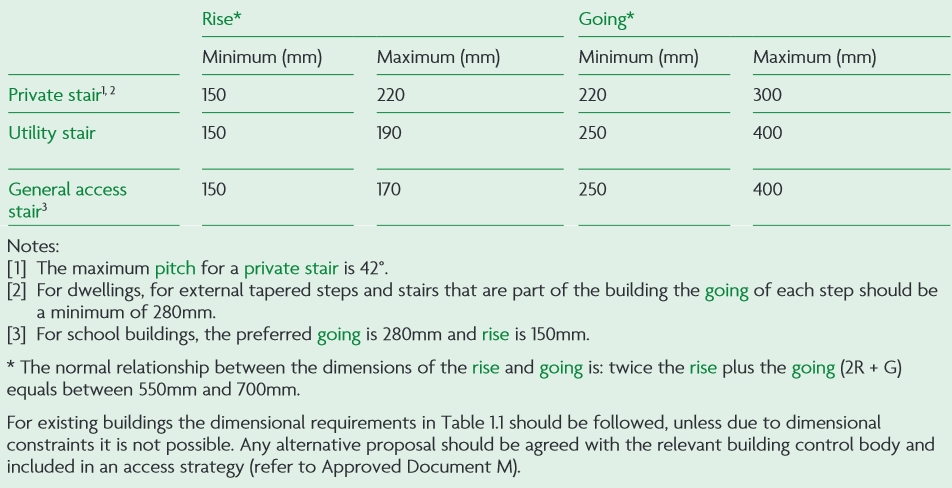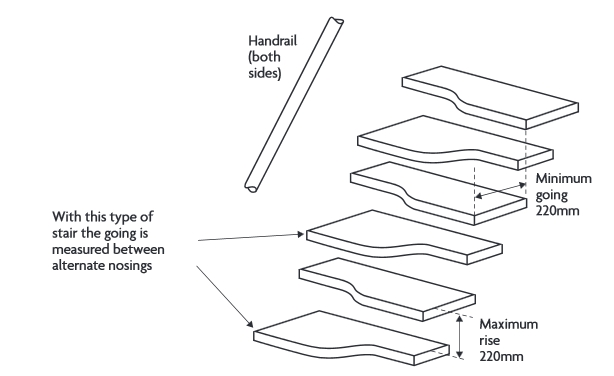Stairs going
Approved Document K - Protection from falling, collision and impact defines the ‘going’ of stairs as the depth from front to back of a tread, less any overlap with the next tread above.
NB: For ramps the going is the length of the ramp between landings.
The steepness, rise and going, handrails, headroom, length and width of stairs should afford reasonable safety to people gaining access to and moving about buildings.
The standard of provision needed to give an acceptable level of safety for access and use depends on the circumstances. It may need to be higher in a public building than in a dwelling, because people may not be familiar with the building and there may be more users. A lower standard may be acceptable where access is required only for maintenance, because greater care can be expected from the people requiring to gain access.
[Image: measuring rise and going]
Treads should be level and the rise and going of each step should be consistent throughout a flight of steps.
[Image: rise and going minimum and maximum values]
For tapered treads, consecutive tapered treads, should use the same going. If a stair consists of straight and tapered treads, the going of the tapered treads should not be less than the going of the straight treads.
[Image: measuring tapered treads]
Requirements for alternating stair treads are shown below.
[Image: alternating stair tread]
[edit] Find out more
[edit] Related articles on Designing Buildings Wiki
Featured articles and news
Homes England creates largest housing-led site in the North
Successful, 34 hectare land acquisition with the residential allocation now completed.
Scottish apprenticeship training proposals
General support although better accountability and transparency is sought.
The history of building regulations
A story of belated action in response to crisis.
Moisture, fire safety and emerging trends in living walls
How wet is your wall?
Current policy explained and newly published consultation by the UK and Welsh Governments.
British architecture 1919–39. Book review.
Conservation of listed prefabs in Moseley.
Energy industry calls for urgent reform.
Heritage staff wellbeing at work survey.
A five minute introduction.
50th Golden anniversary ECA Edmundson apprentice award
Showcasing the very best electrotechnical and engineering services for half a century.
Welsh government consults on HRBs and reg changes
Seeking feedback on a new regulatory regime and a broad range of issues.
CIOB Client Guide (2nd edition) March 2025
Free download covering statutory dutyholder roles under the Building Safety Act and much more.
Minister quizzed, as responsibility transfers to MHCLG and BSR publishes new building control guidance.
UK environmental regulations reform 2025
Amid wider new approaches to ensure regulators and regulation support growth.
BSRIA Statutory Compliance Inspection Checklist
BG80/2025 now significantly updated to include requirements related to important changes in legislation.


























